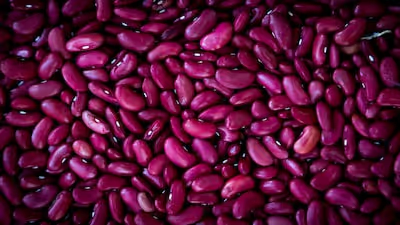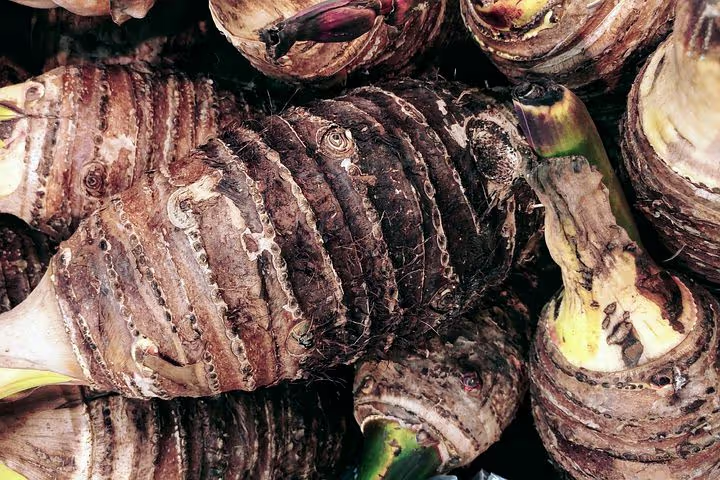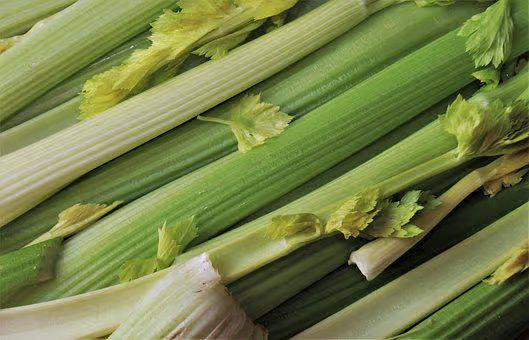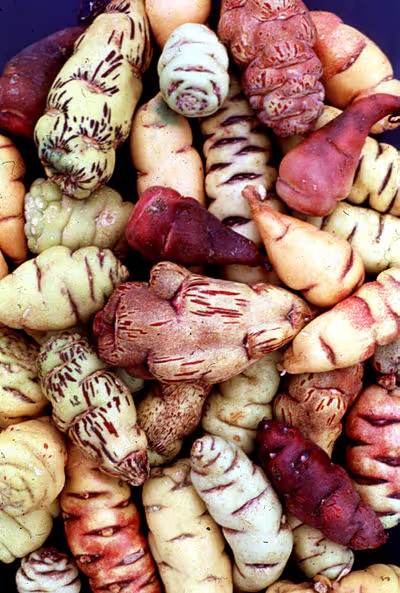Growing Mugwort for a Fragrant, Beautiful Herb Garden
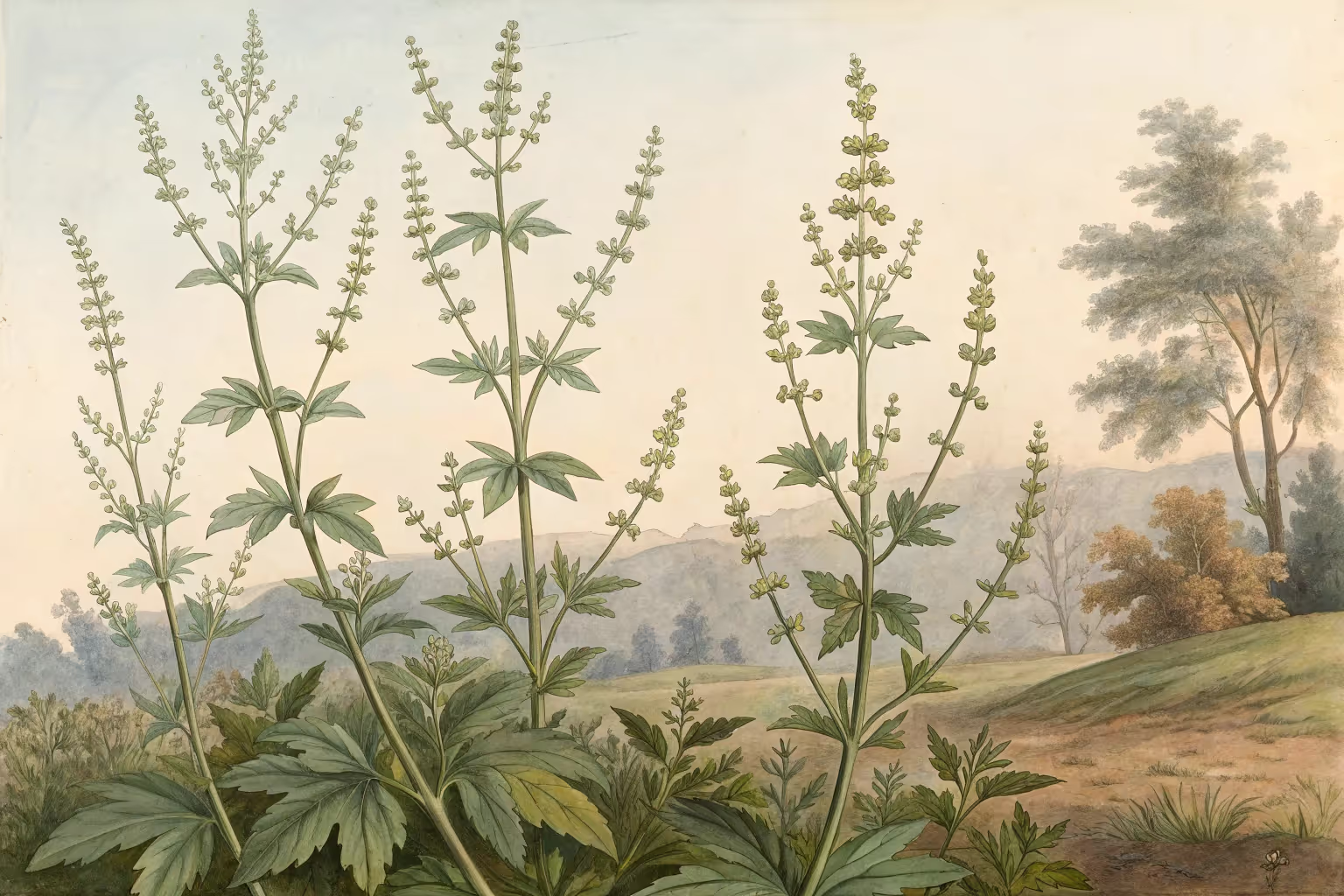
Growing Mugwort
Growing mugwort adds resilience and versatility to your garden and kitchen. This aromatic herb thrives in full sun to partial shade, adapts to most soils, and flourishes even with moderate neglect. While famously easy to cultivate, Artemisia vulgaris—a culinary staple and medicinal powerhouse—requires minimal fuss, rewarding gardeners with vigorous growth and distinct flavor worth discovering.
Cheatsheet: Successful Mugwort Cultivation
🌿 Overview
Hardy perennial, USDA Zones 3-9. Mature height: 3-6 ft (1-2 m). Spreads fast. Aromatic foliage deters pests and attracts pollinators.
🧰 Tools and Products You'll Need
- Seeds or root divisions
- Compost or balanced organic fertilizer
- Mulch
- Hand trowel
- Pruning shears
- Gloves
🌞 Site Selection
- Sun: Full (6+ hrs) or partial shade
- Soil: Well-drained, pH 6.0-7.0
🔄 Planting Steps
- Sow seeds in spring after frost or transplant divisions in fall/spring.
- Space 18–24 in (45–60 cm) apart.
- Cover lightly with soil (1/8 in, 3 mm deep).
- Water until established (keep moist, not soggy).
- Mulch to retain moisture and reduce weeds.
💧 Care Tips
- Low water once established (1 in/2.5 cm per week).
- Fertilize yearly with compost.
- Prune aggressively to control spreading.
✂️ Harvest & Uses
- Harvest leaves anytime; cut before flowering for best aroma.
- Use fresh or dried in teas, sachets, or as insect repellent.
- Traditional use: some cultures use for digestion, sleep, or ceremonial smudging.
☀️ Did You Know?
One plant can yield 2+ lbs (900+ g) of leaves each season. Self-sufficient growers appreciate mugwort’s medicinal and culinary versatility.
Growing Mugwort for a Fragrant, Beautiful Herb Garden
I grow mugwort for its silver-green glow, the resinous scent that lifts on warm evenings, and the sheer swagger it brings to a border. It is easy, forgiving, and a little wild, which I respect.
Quick profile at a glance
- Botany: Artemisia vulgaris and close cousins like A. argyi and A. princeps.
- Hardiness: USDA 4 to 9, roughly minus 30 to 20 F, minus 34 to minus 6 C, depending on species.
- Habit: Rhizomatous perennial, 3 to 6 ft tall, 0.9 to 1.8 m, spreading roots.
- Light: Full sun to bright part shade, best scent in sun.
- Soil: Lean, well drained, pH 6.0 to 7.5, tolerates sand and rubble.
- Water: Low once established, 1 inch, 25 mm, weekly in heat until rooted.
- Wildlife: Nectar for late pollinators, deer and rabbits usually avoid it.
- Use: Ornamental, aromatic, culinary traditions vary by species, craft and smoke bundles in some cultures.
Site and soil that mugwort loves
I give it sun and air, then keep the soil on the dry side to concentrate aroma. Rich beds make floppy growth, lean beds make sturdy stems and better fragrance.
Good drainage is nonnegotiable on heavy clay, so I mix in grit or plant on a slight mound. Salt spray does not faze it near the coast in my experience.
Containment first, then plant
Rhizome control keeps the rest of the garden safe, and it keeps you sane. I sink a physical root barrier 12 to 18 in deep, 30 to 45 cm, with a 1 in, 2.5 cm, lip above grade.
Containers work beautifully, and they perfume patios. Go for 12 to 20 in, 30 to 50 cm, wide pots with sharp drainage and a gritty mix.
Planting, the reliable ways
Divisions and cuttings
Growing Mugwort from divisions is my standard move. In early spring or fall, slice off vigorous outer clumps with a sharp spade, heel in, water once, then ignore.
Softwood cuttings root fast in late spring, 3 to 5 inch tips, 8 to 12 cm, in perlite and compost, high humidity for 10 to 14 days. I trim leaves to halve transpiration and pinch the tip after rooting.
Seed, for the patient
Seed can be erratic, so I treat it like a bonus, not a guarantee. I cold stratify 2 to 4 weeks at 34 to 40 F, 1 to 4 C, then surface sow at 64 to 70 F, 18 to 21 C, since light helps germination.
Do not bury the seed, just press it in. Pot on gently, and plant out after danger of hard frost.
Care calendar that never fails me
- Early spring: Cut last year’s stems to 2 in, 5 cm, topdress with a thin layer of compost and grit.
- Late spring: Shear by one third to thicken, stake tall varieties early if windy.
- Mid summer: Water deeply only during heat waves, remove flower clusters if you want zero reseeding.
- Fall: Divide and replant fresh sections, compost the tops, bin the rhizomes to avoid spreading.
- Winter: Leave a few stems as habitat if you like, then cut back again in spring.
Water and feeding
Mugwort sulks in soggy beds, so I water long and seldom, then let it dry. Fertilizer makes it floppy and bland, so I skip it except for a light compost pinch in spring.
Pruning and shape
I treat it like a hedge herb, shearing lightly in June to keep a tidy dome. For towering screens, I remove side shoots and let a few leaders run to 6 ft, 1.8 m.
Companions and design notes
It looks fierce with blue catmint, lavender, sea holly, and prairie grasses. I keep it away from delicate annuals and edible roots, since mugwort can suppress nearby seedlings.
Harvest, flavor, and craft
I pick young spring shoots of A. argyi or A. princeps for traditional dumplings and rice cakes, they taste resinous and herbal. I dry leaves for tea at 95 F, 35 C, on screens until they snap.
For sachets, I harvest right before bloom, fragrance peaks then. Store in amber jars, cool and dark, and they hold for a year.
In Central Europe, mugwort pollen sensitization in allergy clinics often sits around 10 to 14 percent, so plant with awareness if your household is sensitive.
I see more late summer sniffles near big patches here. People with ragweed or birch allergies sometimes react, so I place mugwort downwind of seating and doors.
Safety notes I follow
All parts contain thujone and other aromatic compounds, which give the punchy scent. Avoid large internal use during pregnancy, and always confirm species before culinary use.
Pets usually ignore it, yet I still keep clippings off the lawn after pruning. Wear gloves during division, the sap can irritate some skin types.
Regulatory and invasive status
Artemisia vulgaris is listed as invasive in parts of North America, and sale or planting can be restricted locally. I always check the USDA PLANTS database and my state invasive list before buying or sharing divisions.
Contain it with barriers or pots if permitted, or choose tamer kin like A. absinthium for a similar look with less spread. Never dump rhizomes in green waste that is destined for open compost.
Top species and garden picks
- Artemisia vulgaris, classic mugwort, towering, intensely aromatic, aggressive spreader.
- Artemisia argyi, Chinese mugwort, broader leaves and a softer flavor for cooking, still vigorous.
- Artemisia princeps, Japanese mugwort, used for kusa mochi, compact compared to A. vulgaris.
- Artemisia douglasiana, California mugwort, great for dry gardens in the West, handles heat.
- Artemisia vulgaris Oriental Limelight, variegated and electric in containers, reverts to green if stressed.
Alternatives if mugwort is restricted
- Artemisia schmidtiana Nana, dwarf, feathery, 8 to 12 in, 20 to 30 cm, perfect edging.
- Artemisia absinthium, wormwood, taller with silver foliage and a similar scent, less rhizomatous.
- Lavandula x intermedia, for fragrance in sun with tidy roots and long bloom.
Shopping guide and what to look for
Divisions and plugs outperform seed packets for Growing Mugwort. I buy quart pots for instant impact, and I expect a price around 6 to 15 USD per plant, 6 to 15 EUR in specialty nurseries.
Seed lots benefit from a cold treatment note on the packet, which signals the vendor knows the crop. For barriers, choose 60 mil HDPE or thicker, or heavy nursery tubs without drain holes near the sides.
Troubleshooting fast
- Leggy and floppy: Cut back hard in June, grow in more sun, reduce nitrogen.
- Yellowing leaves: Improve drainage, ease up on watering, raise the planting height.
- No scent: Increase sun, reduce feeding, try A. argyi or A. princeps for richer aroma.
- Taking over: Install a barrier, move to a pot, deadhead before seed set, remove rhizomes weekly for a month.
A few field notes from the nose
On hot afternoons I brush the foliage and catch eucalyptus, menthol, pine, and a faint citrus backnote. It wakes up tired borders the way espresso wakes up a slow morning.
At dusk the leaves glow silver and the scent carries, guests always ask what plant did that. I grin and point to the troublemaker by the gate.
Science and composition, short and sweet
The aroma leans on 1,8 cineole, borneol, and thujone, with smaller fractions that shift by species and soil. Dry, poor ground seems to sharpen the oil profile, which matches what the Royal Horticultural Society advises for Artemisia generally.
Artemisia thrive in poor, free draining soils with full sun, a classic pairing that improves structure and keeps plants healthy.
I have followed that line for years, and it never steers me wrong. Fat soil grows fat stems, lean soil grows character.
FAQ for Growing Mugwort
- Shade tolerance: Light shade works, deep shade weakens scent and structure.
- Container size: Start at 12 in, 30 cm, upgrade yearly, and root prune with a bread knife.
- Bloom time: Mid to late summer, airy plumes that read as texture rather than flowers.
- Germination time: 7 to 21 days after stratification, slower in cool rooms.
- Frost: Fully perennial in zone range, mulch lightly the first winter after planting.
- Compost: Hot compost only, and never add rhizomes unless your pile reaches 140 F, 60 C.
Field-tested pairings that sing
- Mugwort with Panicum Northwind and Echinops ritro for a steel and silver palette.
- Mugwort with Nepeta Walker’s Low to thread scent along a path without fuss.
- Mugwort behind low thyme for a coastal look that drinks sun and ignores drought.
Sources and further reading
- Royal Horticultural Society, Artemisia growing advice, drought tolerant, sun loving, free draining soils recommended.
- USDA PLANTS Database, Artemisia species profiles and distribution in North America.
- European Academy of Allergy and Clinical Immunology and Allergy journal, reports on mugwort pollen sensitization rates in Central Europe.
- NC State Extension and Missouri Botanical Garden, cultivation notes, invasive potential, and garden performance of Artemisia species.
- Kew, Plants of the World Online, taxonomy and species descriptions for Artemisia.
I grow mugwort for the scent, I keep it for the texture, and I corral it like a rowdy dinner guest. Give it sun and boundaries, and it will repay you with drama and low maintenance swagger all season.
Frequently Asked Questions About Growing Mugwort
What soil conditions optimize healthy growth?
Mugwort thrives vigorously in well-drained soil with a neutral to slightly alkaline pH (6.5–7.5). To enrich the soil structure, mix organic compost into your planting area, ensuring the roots develop steadily and receive adequate nutrients.
How much sunlight is best for optimal results?
This herb favors full sun to partial shade. Planting in an area that receives at least 6 hours of direct sunlight daily encourages dense foliage growth and aromatic intensity.
How often do I need to water the herb?
Provide a thorough watering approximately once weekly, adjusting according to rainfall and temperature conditions. Allow the soil to dry slightly between waterings, preventing root rot while promoting strong root development.
What's the ideal planting spacing for vigorous, healthy plants?
Space seedlings or transplants about 18–24 inches (45–60 cm) apart. This allows adequate airflow and room for rigorous expansion, minimizing disease risks and supporting plant health.
What's the ideal temperature range to encourage vigorous growth?
For optimal growth, maintain temperatures between 60–75°F (16–24°C). While the plant tolerates minor frost, prolonged cold or heat extremes may inhibit growth and reduce vitality.
When and how should pruning be conducted for healthier plants?
Prune back the plants in early spring to stimulate lush, structured growth. Remove spent flower stalks and older, woody stems, maintaining proper air circulation and encouraging vigorous new stems.
Are there common pests or diseases to watch for during cultivation?
Common pests include aphids and spider mites; regularly inspect under leaves and along stems. Fungal diseases can occur with excessive moisture or poor airflow. Control pests by applying insecticidal soap and reduce disease risk by maintaining adequate spacing and airflow between plants.
Can this herb tolerate container gardening?
Absolutely, container gardening suits this vigorous grower. Select pots at least 12 inches (30 cm) deep with sufficient drainage holes. Provide nutrient-rich potting mix, consistent watering, and ample sunlight to ensure strong growth and fragrance.
Growing Mugwort is about restraint and placement. Sun to part shade, lean, well-drained soil, and light water after establishment. Skip fertilizer. No need to baby it. Keep it out of soggy ground. Contain creeping rhizomes with a barrier, raised bed, or pot, and clip flower heads to limit seed spread. Cut back in late winter for clean, fresh growth. Divide every few years to renew the clump. Hang stems to dry for aromatic bundles and sachets. Let the silver foliage steady the border and set the tone for the rest of your herb patch.
Round it out with rugged partners like sage, thyme, and dill. If Growing Mugwort has you planning more, scan the full plant list in the guide.
The Prepper's Guide to Cultivating Mugwort for Self-Sufficiency
Medicinal Purposes & Practical Uses
- Natural insect repellent: Dried mugwort repels moths, flies, and mosquitoes when burned or hung indoors.
- Digestive aid: Infusions ease stomach discomfort, stimulate digestion, and soothe cramps.
- Sleep enhancer: Sachets of dried mugwort leaves placed under pillows encourage restful sleep.
- Antibacterial properties: Fresh mugwort poultices relieve minor wounds and reduce inflammation risks.
Preservation Techniques for Post-Harvest Longevity
- Drying: Hang harvested stems upside-down in shaded, well-ventilated spots until brittle; store dried in airtight containers for up to 18 months.
- Freezing: Pack freshly chopped mugwort into freezer bags, removing air; stores safely up to 12 months retaining potency.
- Infused oils: Steep dried leaves in olive or sunflower oil, strain after 4-6 weeks; shelf-stable for several months when properly stored in cool, dark conditions.
Companion Planting for Optimal Production
- Protect crops naturally: Plant mugwort borders around vegetable beds to deter pests like aphids, cabbage worms, and flea beetles.
- Beneficial insect attraction: Flowering mugwort draws predatory insects such as ladybugs and lacewings, assisting biological pest control.
- Soil improvement: Mugwort roots accumulate nutrients, improving soil fertility and structure for future crops.
Essential Precautions for Safe Use
- Dosage caution: Limit internal consumption; high doses may cause adverse reactions—observe moderation.
- Pregnancy risk: Avoid entirely during pregnancy due to uterine stimulant effects.
- Allergy awareness: Individuals allergic to ragweed may experience sensitivity to mugwort.
Find out which plants will thrive in your garden!
Answer a few fun questions and get custom plant recommendations perfect for your space. Let’s grow something amazing together!

start your season

